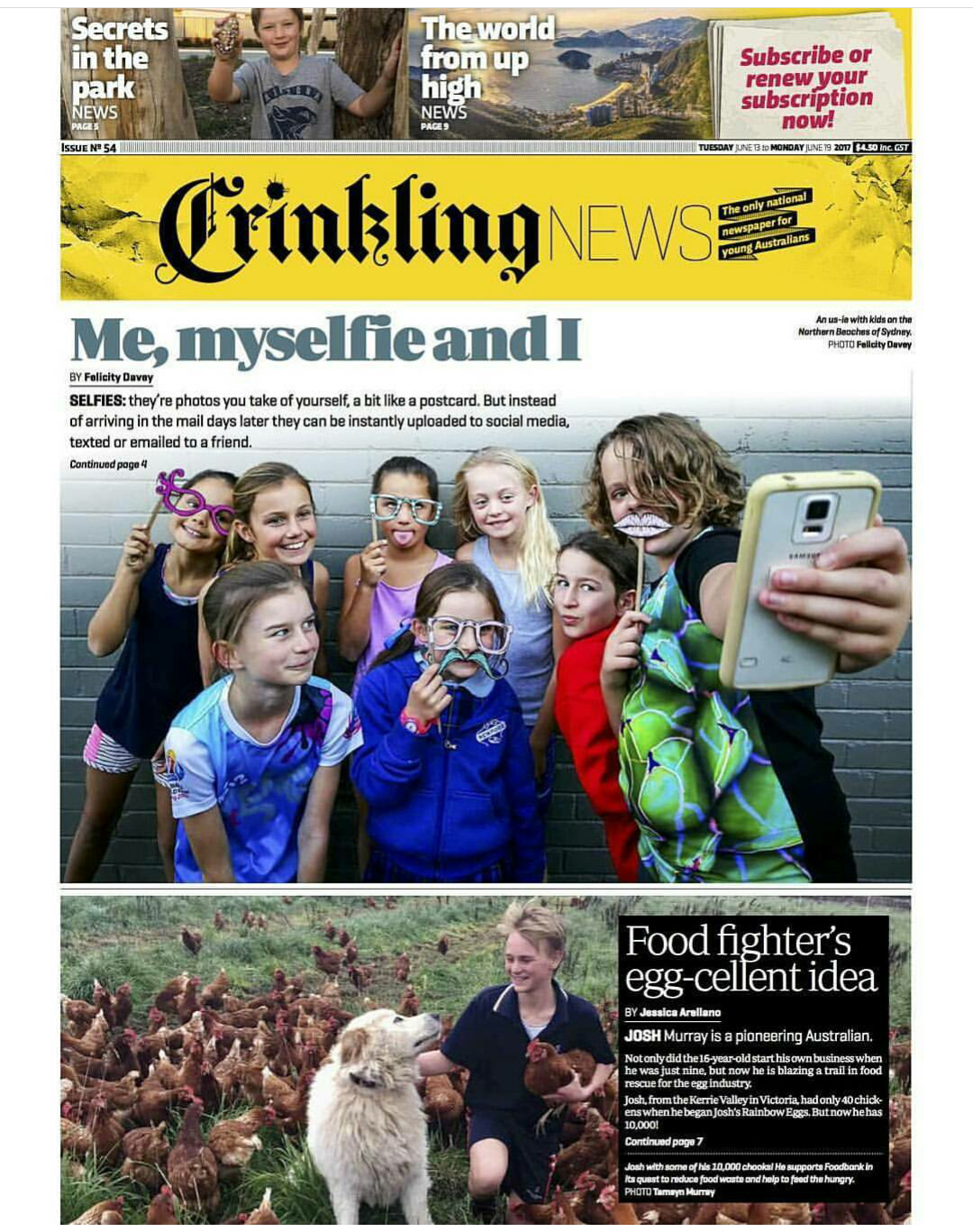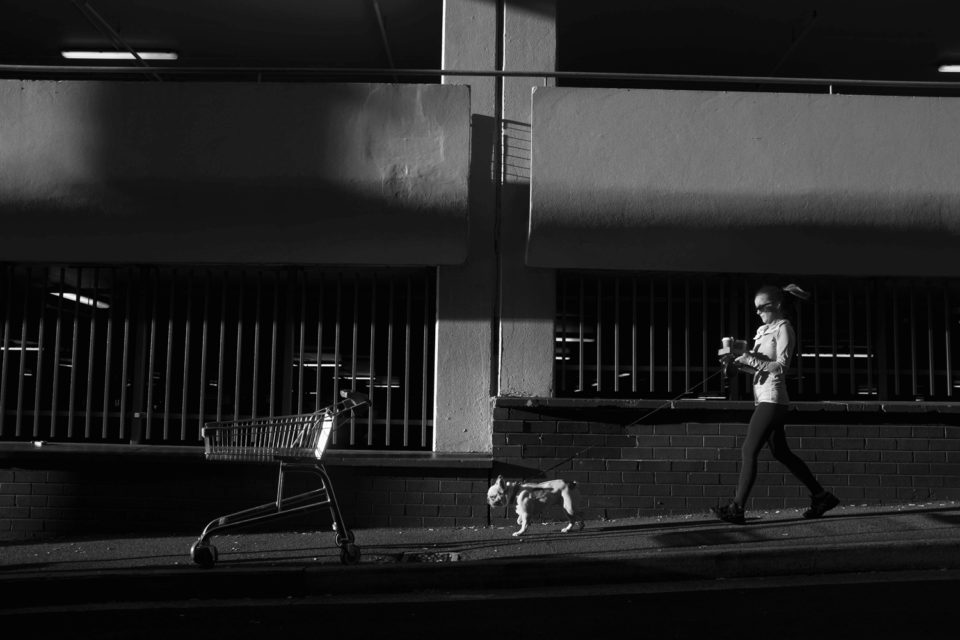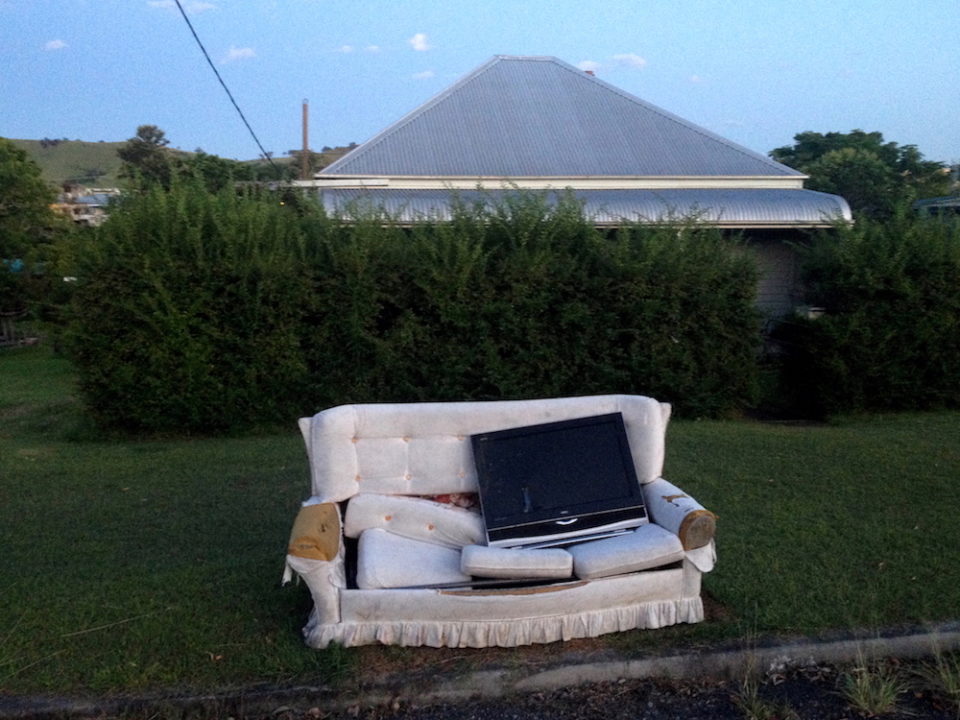Crinkling News, Australia’s only newspaper just for children, is no longer rolling off the printing presses. Its loss earlier this year did not make mainstream headlines. But it meant a lot to me. I believe its departure leaves a serious void in the school libraries, classrooms and homes of Australia.
I had a soft spot for this publication, like many Australian parents, teachers, journalists, academics, kids, mums, dads and grandparents. I subscribed to the paper for a year and a half and it was a delight to see my daughters race each other to the mailbox every Wednesday when the latest edition was delivered. The girls would then argue about who got to unwrap the paper, who could speed-read its contents and who could do the crossword and the puzzles.
I grew up in a home where newspapers were part of the family. My Dad and I walked to the newsagency first thing in the morning (buying fresh bread from the bakery on the way home) and we would read the paper over breakfast while listening to ABC’s Current Affairs program, AM, on the wireless. Important conversations were had among our family about politics, law, religion and the world.
So when I learnt that my kids too could share a similar experience by having Crinkling News delivered to our doorstep, I felt a certain biological imperative: that they should have this paper at their fingertips because reading a newspaper matters. This is true now, probably more so than ever, given the need for children to harness the skills of media literacy in order to navigate the world of ‘fake news’.
As a journalist and a parent too, the paper met some vital criteria for me: it was written with 7-13 year-old children in mind, using appropriate language and images. Knowing your market is one thing, actually engaging with them well is something a bit of Australian adult media even fails at.
For years, when I presented ABC TV News I was mindful that my very young daughters shouldn’t watch certain stories. But the girls liked to wave ‘Goodnight’ to me when they saw me on the telly, so I would text their Dad or their nanny and give them the heads-up about the story line-up of the bulletin and what time was a ‘safe’ time for them to tune in.

Felicity Davey presenting ABC TV News
I felt Crinkling News achieved the perfect balance of being informative and fun, not scary or sensational. If there was a story that was complex or concerning, there would be plenty of explanation and sometimes an article would be accompanied by the wise and expert words of a child psychologist who could put the story in a context. If it was a piece about a terrorist attack, for example, the psychologist might remind the young readers that such incidents were rare. But it was often suggested to the readers that if a story made them feel upset or scared that it was a good idea to talk to a trusted adult about it.
It was a conscious publication. Conceived by journalist Saffron Howden and her graphic designer husband Remi Bianchi, both took their redundancy payouts from Fairfax to establish the paper which they ran from their Blue Mountains home.
A year ago, I decided I liked the paper so much I would pitch a few story ideas to Saffron, and so I became a contributing writer. My first story was about a young Perth boy who was attempting to get over his arachnophobia by breeding hundreds of tarantula spiders (with his Mum who was a keen conservationist, insect and reptile admirer).
Writing for Crinkling News was quite a head exercise, considering the often complex stories (about dual citizenship or secession) aimed at a young readership. Stories had to hook the reader in. Most were under 500 words and you had to explain tricky concepts in an interesting way. Writing became a ‘superpower’.
Saffron maintained the highest of editorial standards and integrity. There was no “Oh that will be good enough.” There was always “Oh I think we need to hear from him or her” and “Let’s find a better photograph, a higher resolution pic please.” I loved the fact that between writer and editor there was always a healthy exchange about what the story should contain. Saffron raised the bar as high as it needed to be for the readership of her paper – the children of Australia.
Over the course of almost a year, I pitched stories on Emojis (did you know there is a sub-committee that meets to determine which symbols or icons become emojis?) and flamingos (there is only one flamingo alive in Australia. An old Chilean flamingo, thought to be male and aged in his 70’s. ‘Chile’, lives at Adelaide Zoo, where keepers are desperate to have the importation ban on exotic birds lifted so that they can get more flamingos). I also wrote about Fidget Spinners, the ethics and pathology of telling lies, Mindfulness and Meditation in primary schools, the theory of Sibling/Birth Order, the magic of learning music and the importance of having a Best Friend.
But I want to make special mention of two young people who I had the great fortune to meet in the course of my writing for the paper.
One is the teenage National Poetry Slam champion, Solli Raphael. His brilliant rap-style poetry about ‘life’ reminds me of the words of Martin Luther King. I believe Solli is a game changer: his writing and performances are thought-provoking and are some of the wisest social commentary around. If you’ve not had the privilege to see or hear his poetry, Google him now! Follow his progress because he is on a trajectory of greatness.
I would also like to salute the humility and tennis-playing prowess of 17 year-old Papua New Guinea born, now Sydney resident, Violet Apisah. A power house on the court, her style is often compared to the great Serena Williams. Last July she flew to London to take her chance at Wimbledon. On the same day she learned that she had qualified to play in the main draw of the Juniors competition she received news from Sydney that her Mum had died.
Violet told me she decided to stay on and play at Wimbledon, to make her Mum proud. She played some phenomenal tennis, making the quarter finals in the singles and the doubles. She also earned the respect of tennis legend Martina Navratilova, who, when she learned about the tragic passing of Violet’s Mum, insisted on meeting with her. According to Violet, Navratilova imparted some comforting and affirming words, reminding her to never give up, no matter what. To say Violet Apisah is inspirational is both a cliché and an understatement. But she truly is.
Through stories like this the publication served to remind me of the joy of journalism. Because I had to see things through young eyes, my own ‘inner child’ informed my writing. It also allowed me to make some incredible connections with people. Those magical ah-ha moments of shared wonder, or of someone telling you something or showing you something that inspires you. It forged a new path and it felt like a new paradigm.
But despite an impressive groundswell of support, and a successful crowdfunding campaign last year (which raised more than $200,000) the paper’s founders issued a media release saying they could not keep publishing the newspaper with the resources they had. Regardless of the announcement of its demise, Crinkling News made a huge contribution to Australia’s media landscape. Saffron and Remi should be proud.
I trust that this publication can at some stage be resurrected so that Australian children can continue to read ‘all the news that’s fit to print’. During its life it informed and inspired thousands of young readers. But I write now to farewell Crinkling News. And do so with a great sense of gratitude not only for its place in my professional career (if only for a short period of time), but also for the delight it brought my own children.





